|
Cat Rock is located immediately north of the Wollman Skating Rink at the
very south end of Central Park, just a short walk from Rat Rock. Follow paths east from Rat Rock, walking under or over
Center Drive. Cat Rock is the obvious south-facing rock wall.
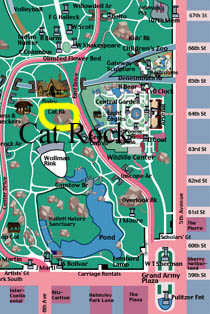 In the summer of 1987, when I first visited Cat Rock, there were only
rumors of bouldering routes there. What I initially found was not encouraging. There wasn't a single trace
of chalk. Beyond the obvious corner
and the arete that created it, the wall was very steep and at first glance, utterly blank. Tall weeds and bushes grew
close to the rock face and true to its name, feral cats lived under the boulder. A cat-loving homeless person
made sure they were well fed by placing open cans of cat food along the base. Over the next two years, however, Cat
Rock underwent an amazing transformation and emerged as a true proving ground for local and visiting climbers. The
only two established problems
in 1987 were the obvious arete and the steep face immediately to the left of the arete. These were to be eclipsed
by long sought after routes up the middle face. These new routes were pioneered inwinter as cold dry weather proved crucial to sticking to the endless parade of tiny crimpers. Initial attempts at the blank middle face proved fruitless. It seemed impossible to many and
rumors circulated of previous eras of strong climbers all failing to find a way up. Then, toward the end of
1988, Nick Falacci established Fancy Feast V3 on the very left side of the middle face. Jeff Dahlgren quickly repeated
the problem and found it was possible to move right after a few moves and access small holds high on the middle face. Dahlgren's
variation became a classic new problem in its own right (The Dawg V5), but more importantly revealed that the upper half
of the middle face was climbable. Would the bottom half go? The answer came quickly in early 1989 when New
Mexico climber Jean DeLataillade unlocked the sequence to the opening moves. Private Angel V6 quickly proved to
be the hardest and best boulder problem in New York City at the time. Soon after, Chris Gonzalez and Jeff
Dahlgren began working on an even harder project that darted up the face between Private Angel and Scratching Post.
Elias V9 was eventually put up in a cold winter day in February 1989. DeLataillade made a fast third
ascent, but soon after a key hold broke near the start. The problem went unclimbed for several years until Komba finally
managed to create an entirely new sequence to overcome both the broken hold and the very height-related crux. Following
six months of intense focused effort, Komba climbed Elias utilizing 22 moves to get up 13 feet of rock. Since then,
there have been no other known ascents.
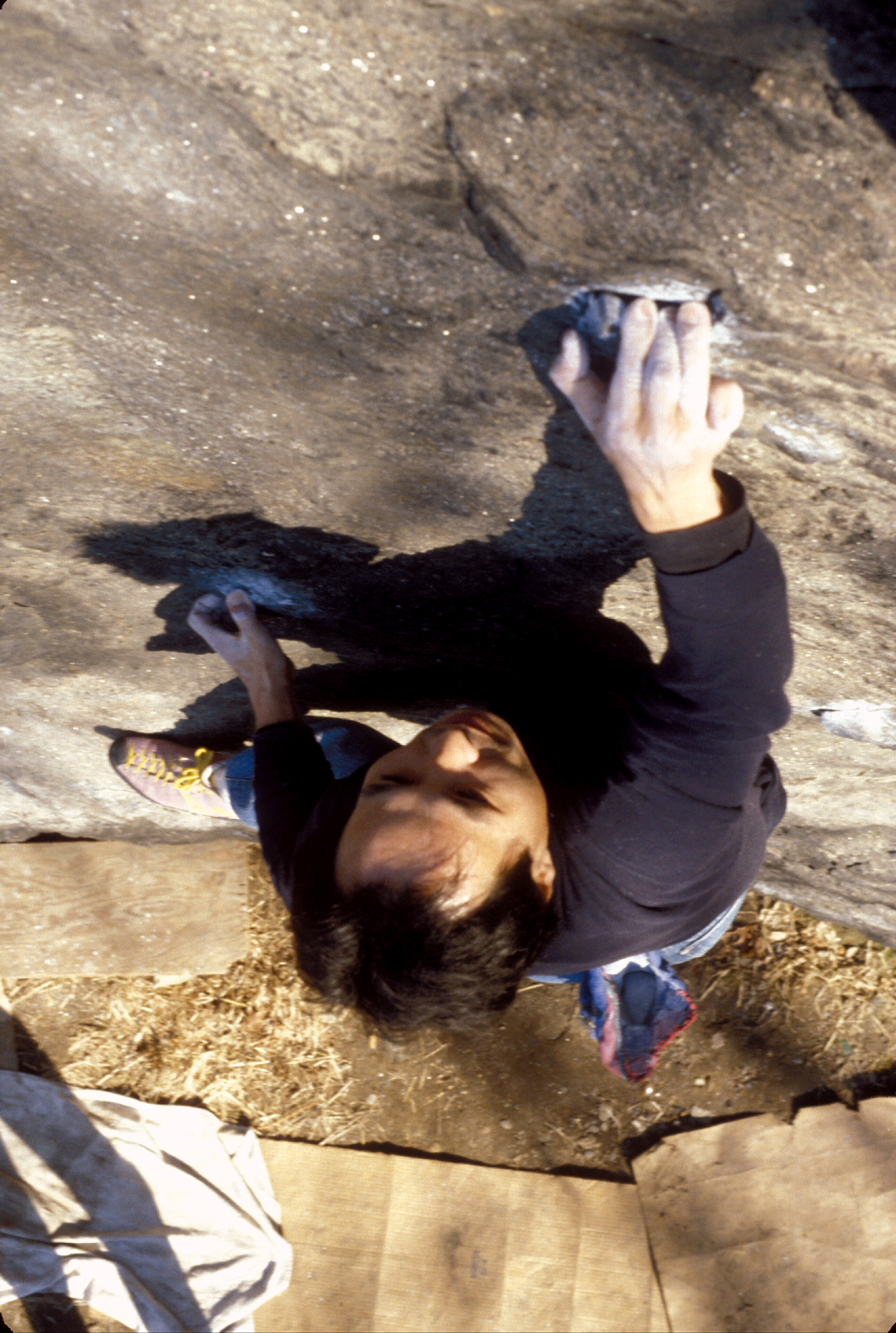
|
| Komba on Scratching Post V3 |
1. Hissy Fit V0 Start:
On the slightly overhanging face just right of the obvious right-facing corner. Go: Up onto the low ledge and make a tenuous move to gain the top. Bad landing. 2. Cat Corner V0-
(5.8) Start: At the obvious right-facing
corner on the east side of the boulder. Go:
Up the awkward corner. Bad
landing. 3.
The Arete V0+ *** Start:
On either side of the obvious arete that creates the left side of Cat
Corner. Go: Up the left side of the
arete to the top. (If you start on the right side, make an initial hard move to gain the left side of the arete.) A classic boulder problem. One of the
best in its grade. Despite being modest in height, it can feel intimidating, especially near the top. However,
good holds are to be found for the exit moves. 4. Scratching Post V3 (aka L.O.T.A.) ** Start: Immediately left of the arete. The right hand crimps on a
thin, sharp flake hold. The left hand on a small sloped hold. Go:
Straight up. Gain the obvious foothold and make one hard move to grab the good hold above. Top out directly or
move left to the groove and exit. This problem was originally referred to as "Left of the Arete." At the time it was the only established
problem on the main face.
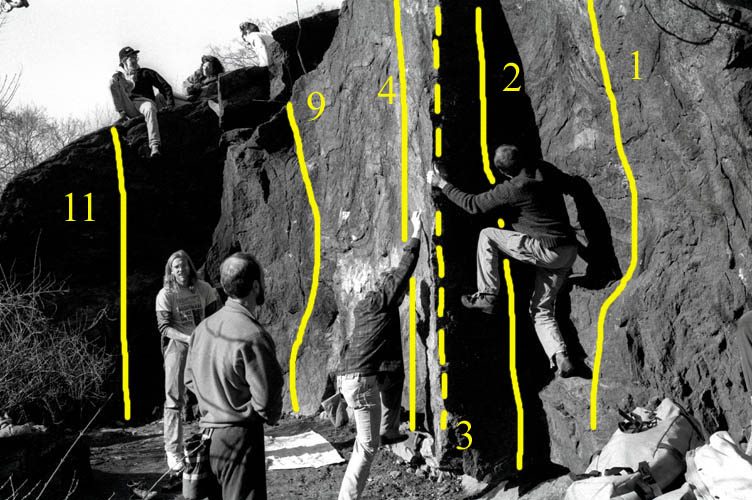
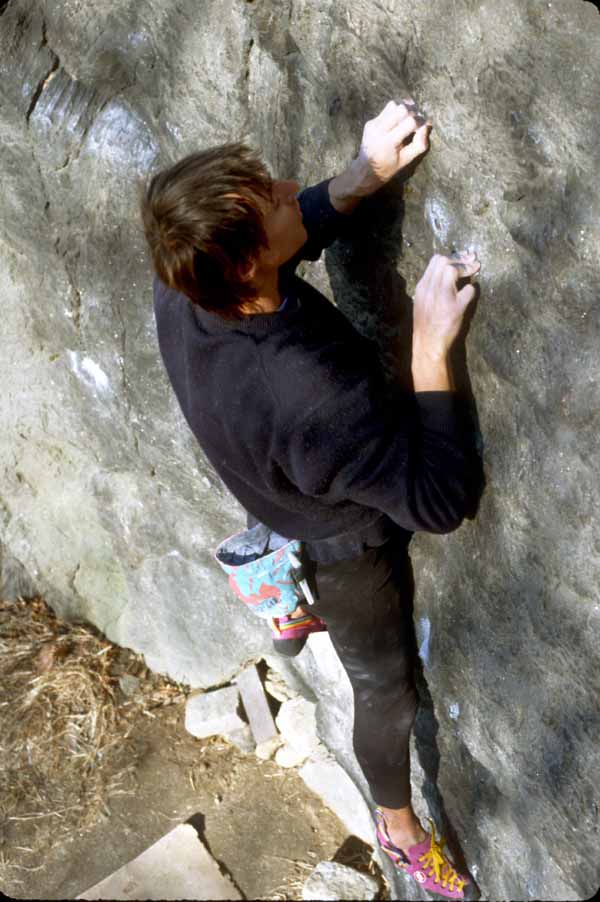
|
| Jean DeLataillade on Private Angel V7 |
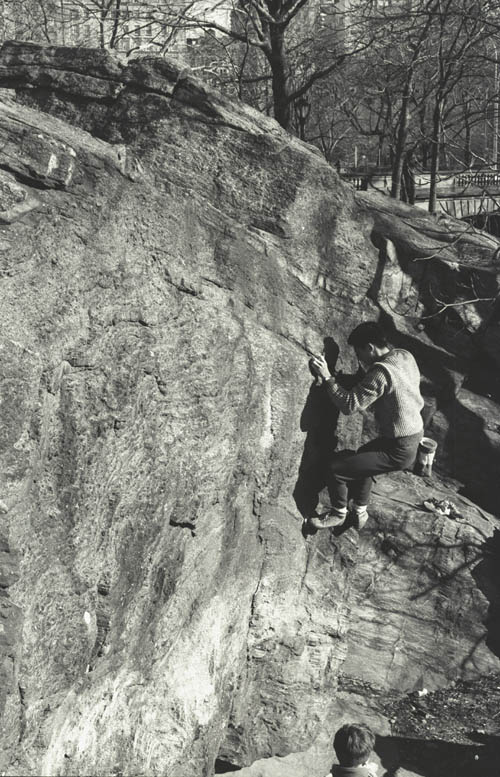
|
| Wa Chin on The Arete V0+ |
|

